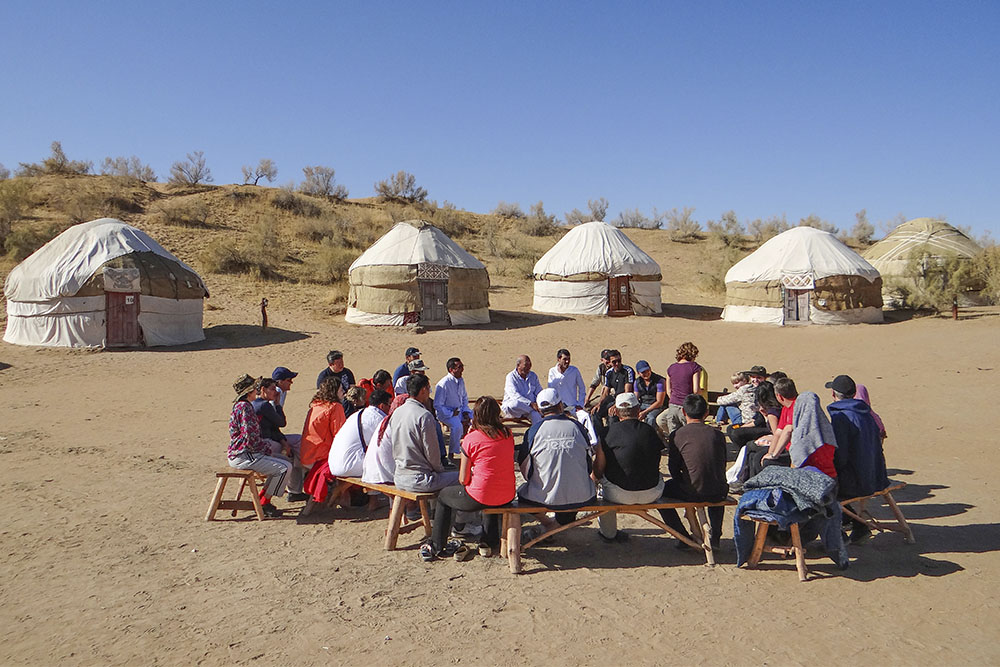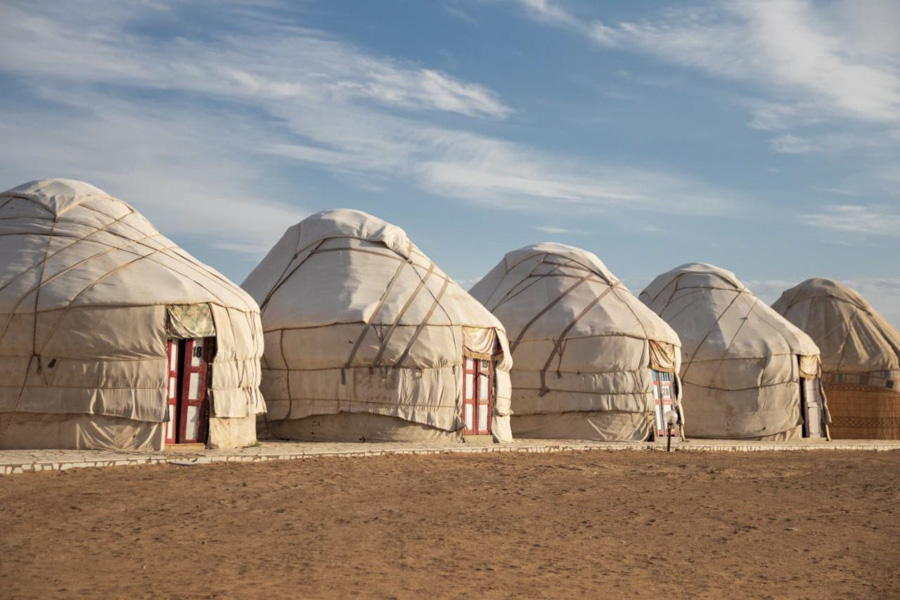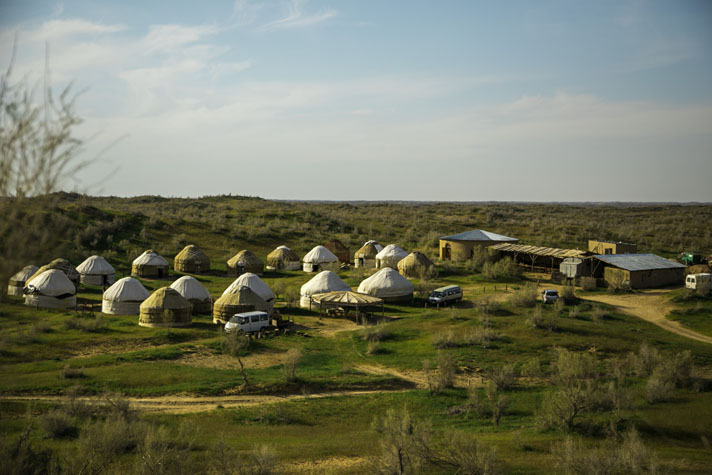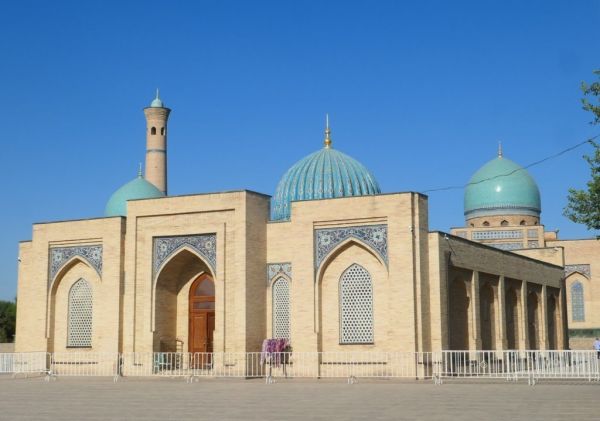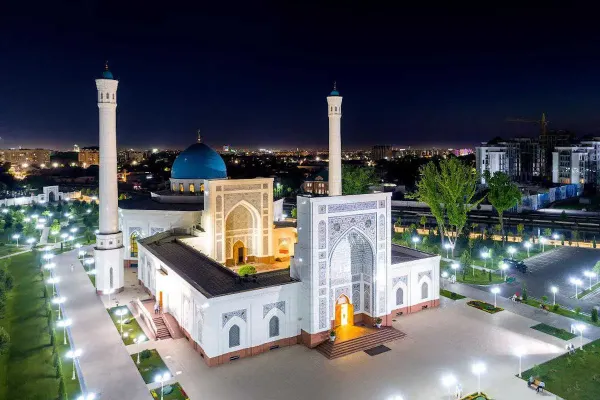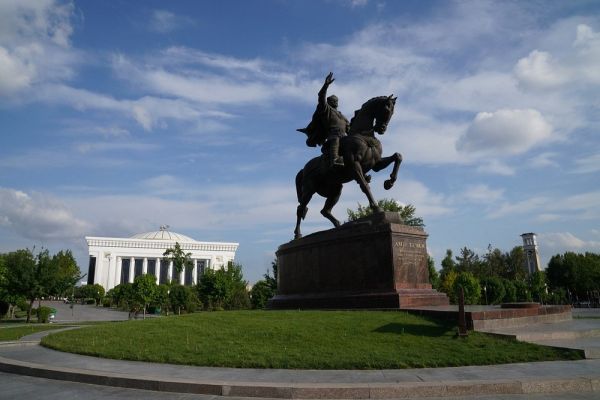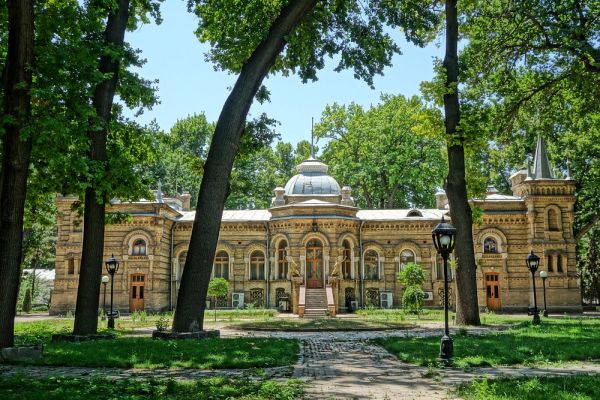Nurata-Aydarkul
Nurata-Aydarkul district is one of the most interesting tourist regions of Uzbekistan. Located in the Jizzakh and Navoi regions on the border of the great Kyzylkum desert and the Nurata Mountains, far from the big cities, the area is a great place for lovers of ecological, active and rural tourism. In this vast region, you will see all the diverse landscapes of Uzbekistan – the Nuratau and Aktau mountains, foothills, steppe, desert and the huge Aydarkul Lake.
You will discover the wonderful world of wildlife, get acquainted with the traditional way of life of the local population in ancient mountain villages. Hiking and horseback riding, a spring riot of flowering plants, bright mountain tulips and fields of scarlet poppies, nut and fruit forests, almond and pistachio bushes, and alpine meadows await you. The animal world is also rich and diverse. Here you can observe more than a hundred species of birds, including quite rare ones like black vulture, bearded eagle, golden eagle, pelicans, paradise flycatcher, blue-lark, golden squint and others. There are many turtles and hares in the desert, and the desert dragon monitor lizard is often found. In the Nuratinsky mountains, you can see a rare endemic species of wild sheep – the Severtsev ram.
To preserve biodiversity and protect these unique territories, it is planned to create the Nurata-Kyzylkum Bioreserve here.
Nurata is a small town, a regional center in the Navoi region (50 km north of the city of Navoi) on the border of the Kyzylkum desert, famous for its ancient history. Already in ancient times there was a large settlement here. Nurata is considered a sacred and popular pilgrimage site. A cult complex with two mosques of the X-XVI century was erected here. Chilustun with 40 columns and a dome about 16 meters in diameter and a Punch Waqta, the burial of Saint Nur-Ota (Sheikh Abul Hassan Nuriy) and a pool in which many “sacred” marinas swim - fish of the trout family. Near the complex you can see the ruins of an ancient fortress, the construction of which is attributed to the troops of Alexander the Great. Kyarizy, an ancient underground water supply system, has been operating on the outskirts of Nurata since ancient times.
Lake Aydarkul is called a geographical miracle that arose on the southeastern edge of the Kyzylkum desert. In earlier times, only the excess drainage waters from the Jizzakh steppe merged into a depression with the saline soil. But in the summer of 1969, a catastrophically high flood on the Syrdarya River exceeded the capacity of the Chardarya reservoir, and the water filled the depression. A lot of fish appeared in the lake. Today, the area of Lake Aydarkul is more than 3,000 square kilometers, the length is about 250 km and the width is from 8 to 15 km.
SAFARI yurt camp is an exotic camp located in the very center of the Kyzylkum desert among the dunes, 8 km from the Western shore of Lake Aydarkul and 3 km away.from the village of Dongilek, lost in the sands. Tourists can ride Bactrian camels at the camp. Tourists also get acquainted with the flora and fauna of the desert. In the evenings, you can also organize a folklore concert, songs of the local akyn around the campfire, and a picnic lunch on the shores of Lake Aydarkul.
The Sarmysh Petroglyph Park is located 40 km from the city of Navoi. It is recognized as one of the largest "stone art galleries" in the world. More than 3,500 petroglyphs (from the Neolithic up to the Middle Ages), carved on black shales, are concentrated over two kilometers. Silhouettes of animals (goats, cows, camels, dogs, etc.), human figures, hunting and farming scenes can be seen on the walls.
Mountain villages (villages) of the Farish region. Many tourists want to get to know the life of the locals better. The most interesting for this are the mountain villages of Asraf, Uhum, Hayat, Majrum, and Sentyabsay, located on the southern slopes of the Nuratinsky range, near the district center of Farish. Each village is located in a mountain gorge and is 5-8 km away from the Jizzakh-Nurat highway. Tourists take walks through the picturesque surroundings of the villages, admire nature, watch and listen to birdsong. Tourists can stay here in traditional houses of local residents specially prepared to accommodate foreign tourists.
